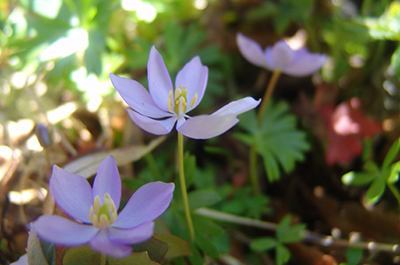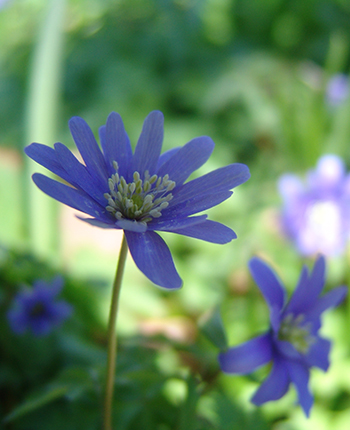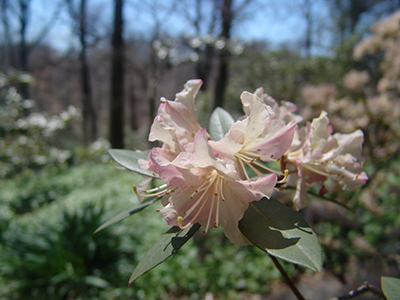
Plants of the Week: April 23

Jeffersonia dubia
Different sources say different things about this tiny woodland perennial. Some botanists call it Jeffersonia named after Thomas Jefferson of the American Revolution and related to Jeffersonia diphylla the United States native perennial. Other sources indicate that the plant should be placed under an entirely different genus labeled as Plagiorhegma dubium.
Either way the plant is a beautiful, small, slow-growing specimen from the mountains of China. Known to be in the barberry family Berberidaceae, the two-winged leaves and delicate flowers emerge from underground lateral stems called rhizomes which are bright yellow when broken. Members of the genus Jeffersonia are sometimes called “rheumatism root” as the plant has a history of use in traditional Chinese medicine.
A small specimen of this can be found in the Wister Garden on the edge of campus. Photo credit: J. Bickel

Anemone blanda
The Wister Garden is in full swing and the shadier portions are dotted with pops of light blue. Among the multitudes of spring ephemerals, the Grecian windflowers caught my attention this year, looking especially lavender-blue like small, delicate, blue-petal daisies.
A member of the buttercup family Ranunculaceae, this flower emerges from small, knobbly tubers in early April, proudly showing its ring of light blue sepals (often mistaken for petals) above the feathery, dissected foliage.
A. blanda is a southeastern European native from regions in Greece, Turkey, and the Caucasus mountains. It happily makes itself at home in the shaded, dry, wooded hills of southeastern Pennsylvania. Photo credit: J. Bickel

Rhododendron ‘Mary Fleming’
‘Mary Fleming’ is a hybrid cultivar of evergreen Rhododendron that can be found blooming in full force at the top tier of the Wister Garden. Sources indicate that ‘Mary Fleming’ is a hybrid of Rhododendron racemosum (of the Yunnan/ Sichuan provinces in China) and Rhododendron keiskei (of Japanese origin).
This time of year, in Mid-April, it is covered from top to bottom in creamy flowers flushed with pink. A member of the family Ericaceae, this evergreen shrub loves well-drained, acidic soils. Missouri Botanic Garden cites A.W. Smith saying that the name Rhododendron comes from the Greek translation of “Rose-Tree.” Photo credit: J. Bickel





No Comments